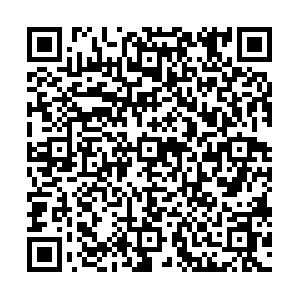发光细菌法评价疫情暴发对长江流域地表水生态毒性的影响
Evaluation of Impact of COVID-19 Outbreaks on Ecotoxicity of Surface Water in the Yangtze River by Luminescent Bacteria Method
-
摘要: 在疫情暴发期间,大量使用的消毒剂和抗疫药物对水生态环境带来未知的潜在风险。本研究以长江流域为研究对象,选取4个江段(攀枝花、三峡、九江和南京江段),在3个季节(疫情暴发前、中、后期)采集表层水样,利用生物毒性测试对长江流域多个地区进行发光菌急性毒性研究。空间分布上,从长江流域上游到下游,水中有机污染物急性毒性呈现逐渐升高的趋势,其中南京江段水中有机物急性毒性相对较高。时间分布上,丰水期(疫情暴发期间)有机污染物急性毒性高于枯水期和平水期,可能源于疫情期间大量使用的消毒剂等带来的生态毒性效应。发光细菌急性毒性检测体系简单快速,能够全面客观地评价水质,可以弥补化学分析只能检测有限目标化合物的不足。Abstract: During COVID-19 outbreaks, the massive use of disinfectants and anti-epidemic drugs brought unknown potential risks to the aquatic environment. Taking the Yangtze River Basin as the object, four sections were selected, and surface water samples were collected in three seasons (before, during and after the COVID-19 outbreak), and the acute toxicity of luminescent bacteria was studied by using biotoxicity tests. Spatial distribution showed that from the upstream to the downstream of the Yangtze River Basin, the acute toxicity of organic pollutants had a gradually increasing trend, with the highest found at Nanjing section. For temporal distribution, the acute toxicity of organic pollutants in wet season was higher than that in dry and normal seasons, which may be due to the ecotoxicity effect caused by the large-scale use of disinfectants during the epidemic. The acute toxicity detection system of luminescent bacteria is simple and fast, and can comprehensively and objectively evaluate water quality, making up for the deficiency that chemical analysis can only detect limited target compounds.
-
Key words:
- COVID-19 /
- surface water /
- Q67 /
- acute toxicity /
- Yangtze River
-

-
Gwenzi W, Selvasembian R, Offiong N A O, et al. COVID-19 drugs in aquatic systems: A review [J]. Environmental Chemistry Letters, 2022, 20(2): 1275-1294 Nippes R P, Macruz P D, da Silva G N, et al. A critical review on environmental presence of pharmaceutical drugs tested for the COVID-19 treatment [J]. Process Safety and Environmental Protection: Transactions of the Institution of Chemical Engineers, Part B, 2021, 152: 568-582 Kumari M, Kumar A. Can pharmaceutical drugs used to treat COVID-19 infection leads to human health risk? A hypothetical study to identify potential risk [J]. The Science of the Total Environment, 2021, 778: 146303 Domingo-Echaburu S, Irazola M, Prieto A, et al. Drugs used during the COVID-19 first wave in Vitoria-Gasteiz (Spain) and their presence in the environment [J]. The Science of the Total Environment, 2022, 820: 153122 Morales-Paredes C A, Rodríguez-Díaz J M, Boluda-Botella N. Pharmaceutical compounds used in the COVID-19 pandemic: A review of their presence in water and treatment techniques for their elimination [J]. The Science of the Total Environment, 2022, 814: 152691 Kuroda K, Li C, Dhangar K, et al. Predicted occurrence, ecotoxicological risk and environmentally acquired resistance of antiviral drugs associated with COVID-19 in environmental waters [J]. The Science of the Total Environment, 2021, 776: 145740 Mazumder P, Kalamdhad A, Chaminda G T, et al. Coalescence of co-infection and antimicrobial resistance with SARS-CoV-2 infection: The blues of post-COVID-19 world [J]. Case Studies in Chemical and Environmental Engineering, 2021, 3: 100093 方政, 董玉瑛, 赵晶晶, 等. 3种不同功效医药品活性成分对发光菌的毒性作用[J]. 生态毒理学报, 2018, 13(6): 185-190 Fang Z, Dong Y Y, Zhao J J, et al. The toxic effects of three active pharmaceutical ingredients with different efficacy to Photobacterium phosphoreum [J]. Asian Journal of Ecotoxicology, 2018, 13(6): 185-190 (in Chinese)
Zhang H, Tang W Z, Chen Y S, et al. Disinfection threatens aquatic ecosystems [J]. Science, 2020, 368(6487): 146-147 Ma X Y, Wang X C, Ngo H H, et al. Bioassay based luminescent bacteria: Interferences, improvements, and applications [J]. The Science of the Total Environment, 2014, 468-469: 1-11 沃燕娜, 肖学喜, 王斌. 地表水发光细菌急性毒性研究[J]. 资源节约与环保, 2016(2): 71-72 方战强, 陈中豪, 胡勇有, 等. 发光细菌法在水质监测中的应用[J]. 重庆环境科学, 2003(2): 56-58, 62 Fang Z Q, Chen Z H, Hu Y Y, et al. Application of Photobacterium phosphoreum toxicity test method for water quality monitoring [J]. Chongqing Environmental Science, 2003(2): 56-58, 62 (in Chinese)
陈文艳, 赵远, 郑国娟, 等. 基于斑马鱼和发光细菌评估制革废水毒性及其削减效率[J]. 生态毒理学报, 2014, 9(2): 358-366 Chen W Y, Zhao Y, Zheng G J, et al. Evaluation of tannery wastewater toxicity and its reduction based on zebrafish and luminescent bacteria [J]. Asian Journal of Ecotoxicology, 2014, 9(2): 358-366 (in Chinese)
Girotti S, Ferri E N, Fumo M G, et al. Monitoring of environmental pollutants by bioluminescent bacteria [J]. Analytica Chimica Acta, 2008, 608(1): 2-29 Zhang Z, Tao H, Zhang Q, et al. Moisture budget variations in the Yangtze River Basin, China, and possible associations with large-scale circulation [J]. Stochastic Environmental Research and Risk Assessment, 2010, 24: 579-589 王金南, 孙宏亮, 续衍雪, 等. 关于“十四五”长江流域水生态环境保护的思考[J]. 环境科学研究, 2020, 33(5): 1075-1080 Wang J N, Sun H L, Xu Y X, et al. Water eco-environment protection framework in the Yangtze River Basin during the 14th Five-Year Plan Period [J]. Research of Environmental Sciences, 2020, 33(5): 1075-1080 (in Chinese)
Zhang Z, Zhou Y, Han L F, et al. Impacts of COVID-19 pandemic on the aquatic environment associated with disinfection byproducts and pharmaceuticals [J]. The Science of the Total Environment, 2022, 811: 151409 白金. 发光细菌法在水质监测中的应用[J]. 河南科技, 2013(8): 168 Bai J. Application of luminescent bacteria method in water quality monitoring [J]. Journal of Henan Science and Technology, 2013(8 ): 168 (in Chinese)
Zhang H, Tang W Z, Chen Y S, et al. Disinfection threatens aquatic ecosystems [J]. Science, 2020, 368(6487): 146-147 Chen J, Qi W, Wang D, et al. Disruption and recovery of river planktonic community during and after the COVID-19 outbreak in Wuhan, China [J]. ISME Communication, 2022, 2(1): 84 李再兴, 尹青, 赵俊娜, 等. 发光细菌法测定水质急性毒性研究进展[J]. 河北科技大学学报, 2014, 35(5): 480-486 Li Z X, Yin Q, Zhao J N, et al. Advance in the application of luminescent bacteria on detecting acute toxicity of water [J]. Journal of Hebei University of Science and Technology, 2014, 35(5): 480-486 (in Chinese)
-

 点击查看大图
点击查看大图
计量
- 文章访问数: 1005
- HTML全文浏览数: 1005
- PDF下载数: 25
- 施引文献: 0


 下载:
下载:
